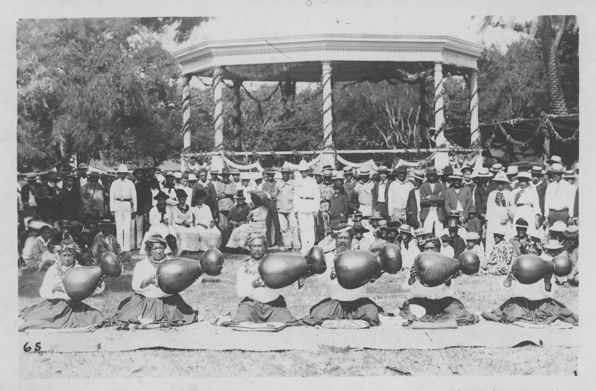Merrie Monarch.
The mere whisper of this name may lead the listener down a vast corridor of thoughts, images and emotions. Some of us will be making the trek to Hilo to enjoy this week’s festivities while most of us will be watching comfortably from our homes.
Those familiar with the Merrie Monarch Festival know that it honors David Laʻamea Kalākaua, the last king of the Hawaiian Kingdom, for his role in the revival of hula.
Born in 1836 to Aliʻi Caesar Kapaʻakea and Keohokālole, Kalākaua was schooled and trained like his royal counterparts at the Chief’s Children’s School.
He would later hold many offices in government but none as significant as that of monarch. In 1874, following the untimely death of King William Lunalilo, Kalākaua was elected king of the Kingdom of Hawaiʻi.
Kalākaua became known as “the Merrie Monarch” for the elegant royal functions and lavish dinners where hula figured prominently in the entertainment.
During his reign, Kalākaua was heavily scrutinized by the missionary establishment for his role in the revival and public promotion of hula. In an 1881 “Sacramento Daily Record-Union” newspaper article, Kalākaua is both commended for his “desire to be abreast with the advancing tide of civilization” and condemned for his defense of “that relic of barbaric sensuality, the unholy hula.”
Kalākaua’s views on the value of hula and Hawaiian culture were directly opposed to that of the missionaries. He is credited with proclaiming that “hula is the language of the heart and therefore the heartbeat of the Hawaiian people” and he went to great lengths to revive the old knowledge of the customs of his people, including hula.
On Feb.12, 1883, King Kalākaua held his coronation ceremony at the newly rebuilt ʻIolani Palace.
The ceremonies ran for two weeks and featured hula nightly. Invitations were sent out to various kumu hula to bring their hālau to Honolulu to perform at the palace.
It was for this occasion that a new genre of hula was born: hula kuʻi. According to scholar Amy Kuʻuleialoha Stillman, the “hula kuʻi was used as a vehicle for reinforcing pride in Hawaiʻi and being Hawaiian and also for validating Kalākaua’s right to rule.”
Also in preparation for the royal festivities, a program titled “Papa Kuhikuhi O Na Hula Poni Moi (A Listing of Coronation Hula)”was printed.
It listed the order of performance, name of mele and the kumu hula, but did not contain any lyrics. This caused a stir through the missionary establishment and the program was called both obscene and illegal under the statute against public nuisances.
In response to this outcry, both printers, William Auld and Robert Greive, were arrested and subsequently convicted. Undaunted, Kalākaua continued to promote traditional stories, dance and arts.
Today, we continue the performances of the hula kuʻi to honor our aliʻi. The Merrie Monarch Festival continues to be a one-of-a-kind, internationally known event to honor and remember King Kalākaua.
Let the merriment begin!

These Moanalua dancers honor King Kalākaua, a well-known supporter of hula, at his 49th birthday celebration.
Credit: Photo from the Hawaiʻi State Archives.
TAGS
hookahua,
merrie monarch,
kalakaua,
history
CATEGORIES
Kaipuolono Article, Newsroom, Department News, Features
Print with photos
Print text only










